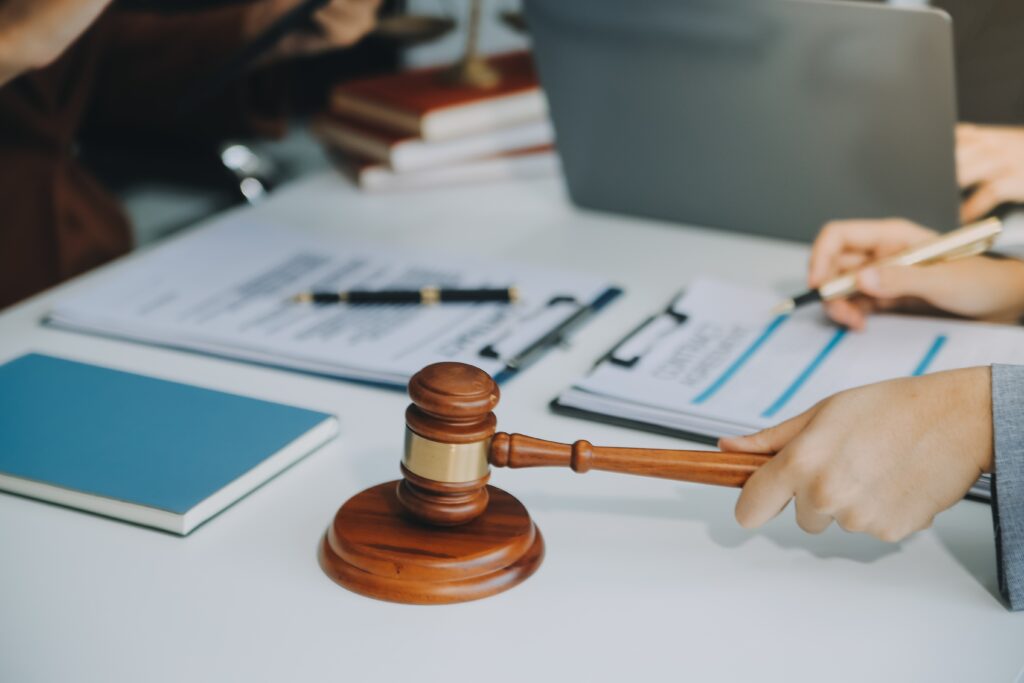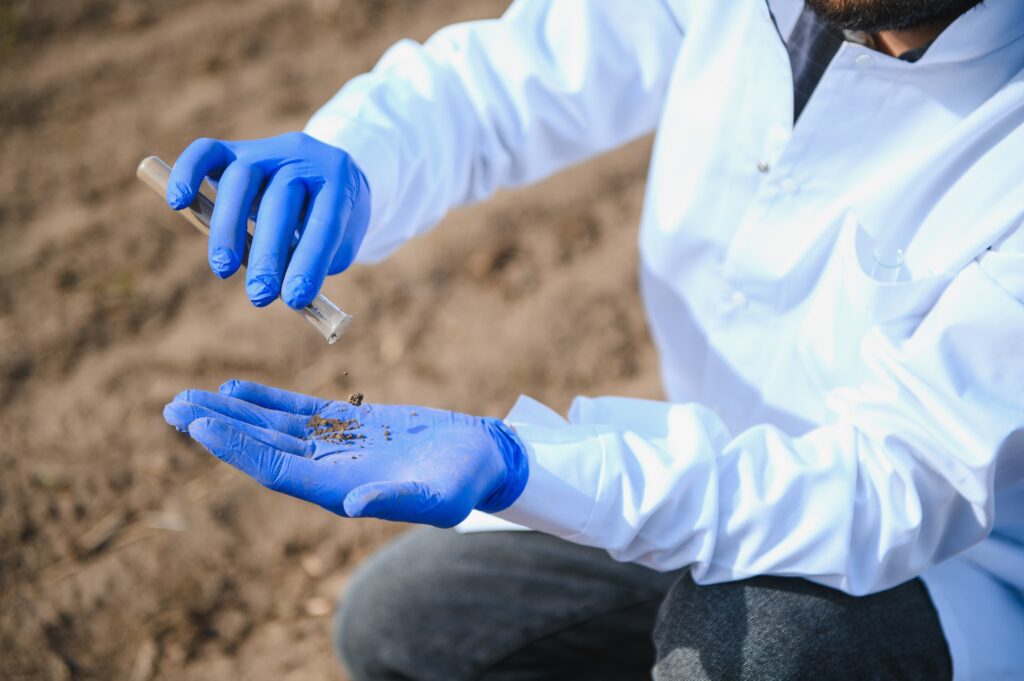In one recent year alone, wildfires scorched over 2 millions of acres across the U.S., leaving farmers, vineyard owners, and their families staring down the financial and emotional fallout.
So, what happens now? The short answer: recovery starts with a plan—assessing damage, securing compensation, and rebuilding stronger than before. It's not easy, but you don’t have to figure it out alone.
At The Bernheim Law Firm, California Wildfire Attorney helps farmers like you reclaim what’s been lost. Whether it’s tackling insurance claims, government assistance, or holding negligent parties accountable, we’re here to make the process less daunting—and a lot more effective. Call 1-800-WILDFIRE today, and let’s get started on rebuilding what’s yours.
What to Do If You Suspect Negligence?
Consult a Disaster Recovery Attorney
Our attorneys understand the nuances of wildfire cases, including how to hold the responsible parties accountable.

- Power Company Negligence: In California, for example, utility companies have faced scrutiny and massive lawsuits for their role in wildfires. Take PG&E: after fires like the Camp Fire in 2018, investigations revealed poorly maintained power lines sparked the blaze. Under California Public Utilities Code §451, utility providers must maintain safe and reliable infrastructure. If they fail, they’re liable for the resulting damage.
- Controlled Burns Gone Wrong: Sometimes, government agencies or private companies conduct controlled burns to clear brush and reduce fire risk. If these burns escape containment, the entity responsible for planning or executing them could be held liable.
Explore Class-Action Lawsuits
Wildfires don’t typically destroy one farm or vineyard—they devastate entire regions.
If a negligent utility company or party burned your property, you’re probably not alone.
- What is a Class-Action? Class-action lawsuits allow a group of individuals (farmers, vineyard owners, and other victims) to collectively sue the responsible party. Instead of fighting alone, you join forces with others in the same position.
- Why It Matters: Class-actions spread legal costs, streamline the litigation process, and increase the likelihood of holding large corporations accountable. For instance, PG&E’s liabilities from various wildfires have resulted in billions of dollars in payouts to victims through both individual and class-action claims.
Timelines Matter: Don’t Miss the Statute of Limitations
The law doesn’t wait forever. If you’re considering legal action, keep the clock in mind—every state imposes a deadline for filing claims. In California, for instance, the statute of limitations for wildfire property damage claims is typically three years from the date of the fire (California Code of Civil Procedure §338).
Miss that window, and you forfeit your right to sue.
- We will ensure you file within the proper time frame. We’ll also preserve evidence, file notices, and handle negotiations while you focus on rebuilding.
Assess the Damage
This step determines what’s salvageable, what’s lost, and where you need to direct your energy and resources. Start here:
Safety First
- Hot Spots: Just because the fire looks out doesn’t mean it’s over. Smoldering embers can stay active for days and reignite nearby debris. Avoid walking through burned areas until professionals declare them safe.
- Unstable Structures: Barns, sheds, or homes that partially burned might collapse without warning. Avoid leaning walls, weakened rooflines, and charred beams.
- Air Quality Hazards: Ash particles and smoke residue hang in the air long after the fire. Wear an N95 mask or respirator to protect your lungs as you assess the damage.
If the fire hits electric lines, gas tanks, or chemical storage, assume they’re compromised. Contact local authorities to inspect these hazards before you move forward. Your safety isn’t negotiable.
Evaluate Structures and Equipment
- Buildings: Walk around structures carefully to identify external and internal damage. Look for warping, cracks in foundations, melted siding, or charred framing.
- Equipment: Check tractors, harvesters, irrigation pumps, and tools for melted plastic, smoke damage, or burned components.
- If equipment appears salvageable, don’t start it up right away. Ash and heat can damage internal components, causing more harm. Call a mechanic to inspect the machinery first.
- Fences and Perimeters: Wooden fences and posts are wildfire fuel. Assess all perimeters for damage that compromises livestock or property boundaries. Replace metal components weakened by heat, as they’re less reliable now.
Inspect Crops and Soil

- Heat Damage to Vines and Trees: Even if they aren’t scorched black, plants might still be affected. Heat can destroy their ability to transport water or nutrients. Signs to look for:
- Leaves drying or falling prematurely
- Bark splitting or discoloration
- Shoots and buds that stop growing over the next few weeks
- A lack of sap flow, which signals root or trunk damage
- Smoke Contamination: For vineyards, smoke exposure impacts more than just appearance—it affects flavor. Grape smoke taint leads to wines with ashy, burnt aromas and tastes, which makes harvests unusable. Test grapes for contamination before processing.
- Soil Health: Wildfires strip topsoil of nutrients, beneficial microbes, and organic matter. Even worse, fire retardants and ash can leave behind chemical residues.
- Conduct soil tests to check pH levels, toxicity, and nutrient depletion.
- Assess erosion risks—burned soil lacks its protective covering, so wind and rain can wash it away quickly.
Check Water Systems
- Irrigation Lines: Plastic irrigation pipes melt or warp under intense heat. Check for leaks, cracks, or disconnections.
- Wells and Reservoirs: Heat and ash can contaminate groundwater or open reservoirs with harmful particulates. Get water samples tested for safety before using it on crops or livestock.
- Equipment Pumps: If pumps and filtration systems suffered heat exposure, they might fail or send contaminants through the system. Inspect all mechanical parts before restarting.
Document as You Go
The instinct might be to roll up your sleeves and start cleaning. Don’t. Before you move a single scorched tool or bulldoze that smoldering barn, take out your phone, open the camera app, and grab a notebook. This is the step that decides whether you get compensated fairly or left high and dry.
Photographic Evidence: Capture the Chaos
Photograph everything—yes, everything. You’re not just proving the fire happened (no one’s doubting that); you’re showing the scale, scope, and depth of the losses.
That means:
- Wide-Angle Shots: Start with broad photos of entire fields, buildings, and structures to establish context. Show the damage in relation to the property’s layout.
- Close-Ups: Zoom in on the details—scorched crops, melted machinery components, collapsed beams, or burned irrigation pipes. Damage to smaller items like tools, fixtures, or stored goods adds up financially, so don’t skip them.
- Sequential Photos: Take photos as you move from one part of the property to another. Capture each building, fence line, vineyard row, or machinery location systematically so nothing is missed.
- Before-and-After Comparisons: If you have pre-fire photos, use them. Matching these side by side creates a clear visual story of the destruction and its impact on your farm’s assets.
Timestamp your photos or video to validate when they were taken.
Written Inventory
Photos show the damage, but words tell the story. That’s where your inventory log comes in. Think of it as a written list of everything the wildfire stole, damaged, or ruined—and assign a value to each loss.
Break it down like this:
- Structures: List all buildings affected, including barns, storage sheds, greenhouses, and homes. Include:
- Descriptions of damage (e.g., "roof collapsed on west barn")
- Approximate size and materials
- Pre-fire condition (newly renovated, aged, etc.)
- Estimated repair or replacement costs
- Equipment: Itemize tractors, irrigation systems, tools, and other machinery. Describe the extent of the damage and their replacement value.
- Example: “John Deere 6E Series tractor—severely heat-damaged; engine nonfunctional; replacement cost $55,000.”
- Crops and Livestock: Categorize losses by type, quantity, and stage of growth or production. Wildfires can reduce entire harvests to ash or damage vines for future seasons. Don’t stop at the obvious: include smoke-tainted crops that are now unusable.
- Stored Goods: Include fuel reserves, fertilizer, feed, harvested crops, or wine barrels destroyed in storage facilities. Fire damage to these assets adds up quickly.
Be precise. Assigning accurate values strengthens insurance claims and legal arguments. If you aren’t sure about specific replacement costs, flag those items to consult with appraisers or recovery specialists later.
Receipts: Build a Paper Trail
Wildfire recovery costs money. Cleaning up the debris, renting temporary equipment, or sourcing alternative irrigation solutions all add up, and someone needs to pay for it—preferably not you.

Keep every receipt related to:
- Temporary repairs (e.g., tarps, fuel for rented generators)
- Cleanup efforts, such as removing debris or ash contamination
- Short-term solutions for irrigation, water delivery, or crop protection
- Hiring contractors or specialists to assess soil and water quality
Organize these receipts with your damage inventory. Together, they prove not only what you’ve lost but also what you’ve already spent trying to put the pieces back together.
Don’t Touch the Evidence
Cleaning up prematurely might seem like progress, but it also risks erasing proof of your losses.
Insurance adjusters need to see the damage firsthand, and in some cases, attorneys or investigators will rely on the same evidence to determine liability.
- Leave structures and equipment untouched until an adjuster or professional inspection is complete.
- Mark off areas of severe damage to ensure safety without disturbing the evidence.
If you must move something for safety reasons, document it first—photos, videos, notes, the whole nine yards. Explain why it had to be moved (e.g., to prevent further collapse or harm).
Get Legal Assistance & Contact Your Insurance Provider
Once you’ve documented everything, it’s time to involve your insurance provider. The process is bureaucratic, tedious, and sometimes downright maddening. But you can’t afford to get it wrong, and the more methodical you are, the better.
But before you do, this is the perfect time to consult a lawyer. Why? Because insurance companies love loopholes—and your policy is probably full of them. Without legal guidance, you might miss damages you didn’t even realize you could claim.
An attorney will help you interpret the fine print, flag anything the insurer conveniently overlooked, and ensure you document your losses in a way that aligns with your coverage. By the time you’re ready to deal with the insurer, you’ll know exactly what you’re owed, and your lawyer will make sure you get it.
Now, with the groundwork set, it’s time to open that claim.
Notify Your Insurer Immediately
- Call your insurance company as soon as you’ve documented the extent of the damage.
- Provide an initial, high-level overview of the destruction: “Our vineyard sustained extensive crop loss, equipment damage, and structural destruction from the wildfire.” Keep it brief—you’ll supply details later.
Once you’ve notified them, they’ll assign a claims adjuster to evaluate your losses. Mark your calendar for any follow-up calls or meetings; this process works on their timeline, not yours.
Prepare for the Adjuster’s Visit
The claims adjuster is your insurance company’s boots on the ground. Their job is to inspect the damage, verify your losses, and calculate what the insurer owes you.
Here’s how you make their visit count:
- Be Ready: Have your photos, videos, and inventory log at hand. Walk them through the damage methodically, pointing out all areas of loss.
- Stick to the Facts: Emotions run high when a wildfire tears apart your farm, but stick to the facts during the inspection. “This barn housed $25,000 worth of equipment, which is now unsalvageable,” carries weight. “I lost everything!” does not.
- Highlight Hidden Losses: Some damage isn’t obvious, like smoke-tainted crops or heat-damaged equipment. Mention these issues, and provide any expert reports or soil/water testing results to back up your claims.
Document everything during the adjuster’s visit. If they miss something—or undervalue a loss—you’ll have records to challenge their findings.
Push Back if Needed

Insurance companies aren’t charities. If they can minimize your claim, they will. Their initial offer often doesn’t reflect the full extent of your losses, so don’t accept it blindly without consulting with your attorney.
They’re counting on you being too exhausted or overwhelmed to push back, but this is where you hold the line and pass them off to us. We will:
- Request a Detailed Report: If the payout seems off, we ask for a breakdown of how they calculated the damages. This gives us a paper trail to dispute their numbers.
- Get Independent Estimates: We will connect you with contractors, appraisers, or agronomists to provide independent evaluations of the damage.
Reclaim What the Wildfire Took
Destruction doesn’t mean defeat. Whether it’s insurance claims, legal battles, or rebuilding stronger, our team at The Bernheim Law Firm knows how to help farmers and vineyard owners like you take back what’s yours.
Don’t let someone else’s negligence—or a slow-moving insurer—decide your future. Call 1-800-WILDFIRE today, and let’s start rebuilding together.